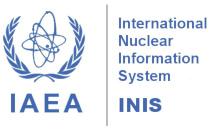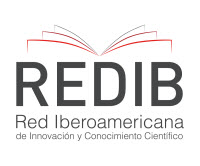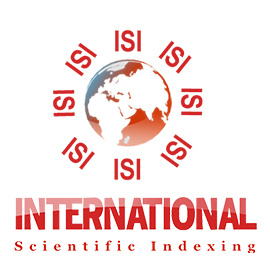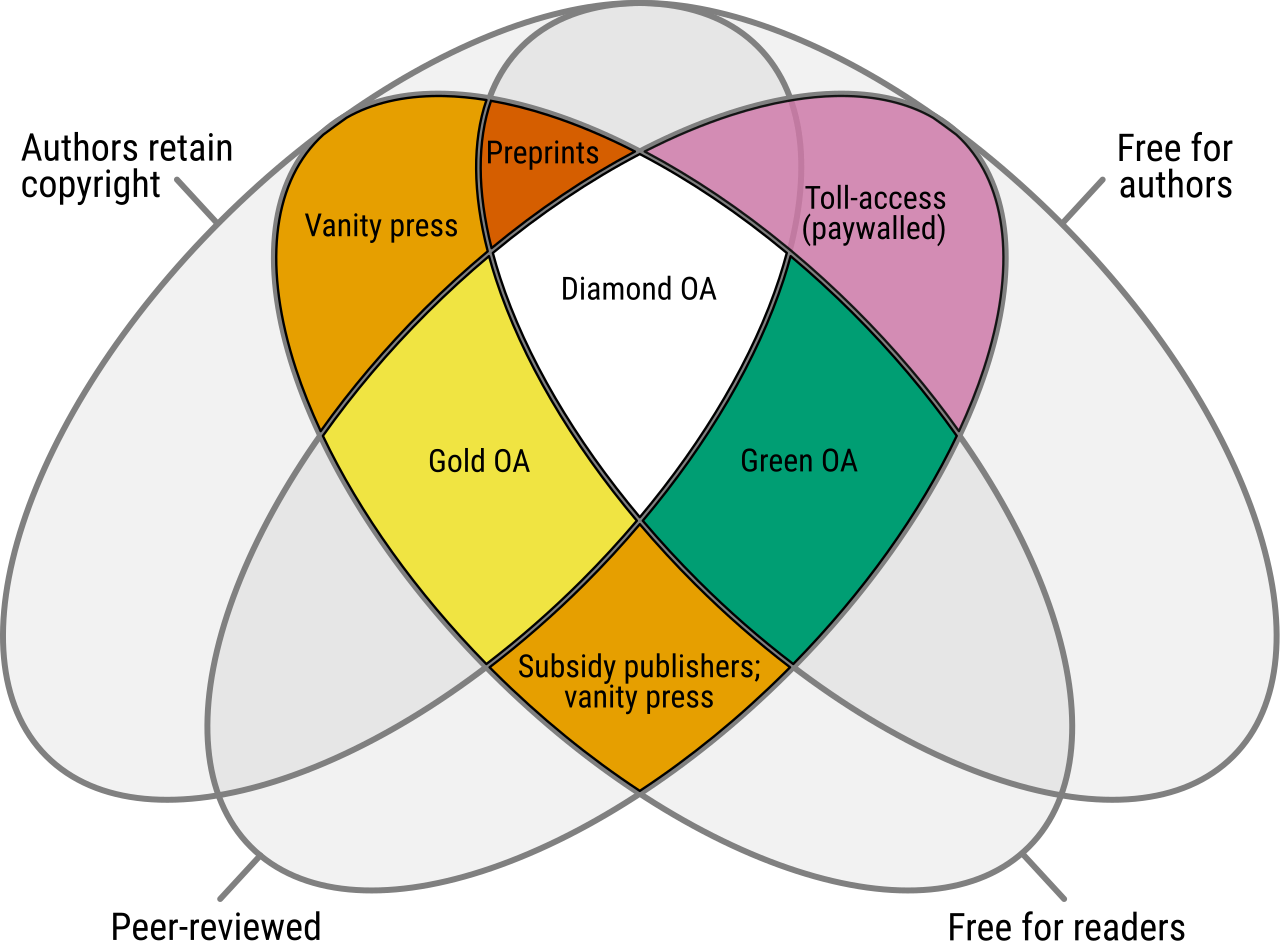Relative dose-response from solid-state and gel dosimeters through Monte Carlo simulations
DOI:
https://doi.org/10.15392/bjrs.v10i3.2049Keywords:
Glass dosimeter, luminescence dosimeters, Gel dosimeters, Monte Carlo codesAbstract
The present work compared the relative absorbed dose of some dosimetric materials, for energies of 250 kV and 6 MV, using PENELOPE and MNCPX codes. The composition of each material GD-301, TLD-100, MAGIC, and MAGAT were simulated and disposed of in a phantom filled with water following reference conditions recommended by the TRS-398 protocol. Percentage depth dose was used as a parameter of comparison. Since the obtained results with both codes were found a maximum difference of up to 2 % when compared the water material with experimental data before 6cm were found to a maximum difference of up to 2.2% for 6 MV and 5.5 % for 250 kV. Ratios between simulated PPD and experimental PDD values showed a maximum difference in the build-up region, for 6 MV, due to highsensitivityive from the incident fluency in the simulated and experimental conditions. The ratios for 250 kV showed significant differences from the simulated solid-state rather than gel dosimeters, due to its low energy, depth angular dependence from the solid-state dosimeter, as corroborating by literature. Even the differences showed for both codes, especially for lower energy, due to cross-the section database that implied the interaction probability for each Monte Carlo code, this method has been widely used to model radiation transport in several applications in medical physics, especially in dosimetry.
Downloads
References
CHAND, S.; MEHRA, R., CHOPRA, V. Recent developments in phosphate materials for their thermoluminescence dosimeter (TLD) applications. Luminescence, v. 36(8), p. 1808–1817, 2021. DOI: https://doi.org/10.1002/bio.3960
GUERIN, G, CHRISTOPHE, C, PHILIPPE, A, MURRAY, AS, THOMSEN, KJ, TRIBOLO, C, ET AL. Absorbed dose, equivalent dose, measured dose rates, and implications for OSL age estimates: Introducing the Average Dose Model. Quat Geochronol, v. 41, p. 163–173, 2017. DOI: https://doi.org/10.1016/j.quageo.2017.04.002
NEZHAD, ZA. A review study on the application of gel dosimeters in low energy radiation dosimetry. Appl Radiat Isot, v. 179, p. 110015, 2019. DOI: https://doi.org/10.1016/j.apradiso.2021.110015
PODGORSAK, E.B. Radiation Physics for Medical Physicists. 3rd ed. Springer, 2016. DOI: https://doi.org/10.1007/978-3-319-25382-4
OLIVEIRA, LC, MILLIKEN, ED, YUKIHARA, EG. Development and characterization of MgO: Nd,Li synthesized by solution combustion synthesis for 2D optically stimulated luminescence dosimetry. J Lumin, v. 133, p. 211–216, 2013. DOI: https://doi.org/10.1016/j.jlumin.2011.10.032
BENALI, A-H, MEDKOUR ISHAK-BOUSHAK, G, NOURREDDINE, A, ALLAB, M. Comparison of RPL GD-301 and TLD-100 detectors responses by Monte Carlo simulation. EPJ Web of Conferences, v. 100, p. 02001, 2015. DOI: https://doi.org/10.1051/epjconf/201510002001
PIESCHI, E, BURGKHARDT, B, FISCHER, M, RÖBER, HG, UGI, S. Properties of Radiophotoluminescent Glass Dosemeter Systems Using Pulsed Laser UV Excitation. Radiation Protection Dosimetry, v.17, p. 293–297, 1986. DOI: https://doi.org/10.1093/rpd/17.1-4.293
YAMAMOTO, T. RPL Dosimetry: Principles and Applications. AIP Conference Proceedings, 2011. p. 217–230. DOI: https://doi.org/10.1063/1.3576169
RAH, J-E, OH, DH, SHIN, D, KIM, D-H, JI, YH, KIM, JW, ET AL. Dosimetric evaluation of a glass dosimeter for proton beam measurements. Appl Radiat Isot, v. 70, p. 1616–1623, 2012. DOI: https://doi.org/10.1016/j.apradiso.2012.04.007
WESOLOWSKA, PE, COLE, A, SANTOS, T, BOKULIC, T, KAZANTSEV, P, IZEWSKA, J. Characterization of three solid states dosimetry systems for use in high energy photon dosimetry audits in radiotherapy. Radiat Meas, v. 106. p. 556–562, 2017. DOI: https://doi.org/10.1016/j.radmeas.2017.04.017
GHONEAM, SM, MAHMOUD, KR, DIAB, HM, EL-SERSY, A. Studying the dose level for different X-ray energy conventional radiography by TLD-100. Appl Radiat Isot, v. 181, p. 110066, 2022. DOI: https://doi.org/10.1016/j.apradiso.2021.110066
HOROWITZ, YS, MOSCOVITCH, M. Highlights and pitfalls of 20 years of application of computerized glow curve analysis to thermoluminescence research and dosimetry. Radiat Prot Dosim, v. 153, p. 1–22, 2013. DOI: https://doi.org/10.1093/rpd/ncs242
MOSCOVITCH, M, BENEVIDES, L, ROMANYUKHA, A, HULL, F, DUFFY, M, VOSS, S, ET AL. The applicability of the PTTL dose re-analysis method to the Harshaw LiF:Mg,Cu,P material. Radiat Prot Dosim, v. 144, p. 161–164. 2011. DOI: https://doi.org/10.1093/rpd/ncq570
BALDOCK, C, DE DEENE, Y, DORAN, S, IBBOTT, G, JIRASEK, A, LEPAGE, M, ET AL. Polymer gel dosimetry. Phys Med Biol, v. 55, p, R1–63, 2010. DOI: https://doi.org/10.1088/0031-9155/55/5/R01
FARHOOD, B, GERAILY, G, ABTAHI, S. M. M. A systematic review of clinical applications of polymer gel dosimeters in radiotherapy. Appl Radiat Isot, v. 143, p. 47–59, 2019. DOI: https://doi.org/10.1016/j.apradiso.2018.08.018
ALVA, M, MARQUES, T, SCHWARCKE, M, RODRIGUES, LN, BAFFA, O, NICOLUCCI, P. A Water-equivalent calibration of 192Ir HDR Brachytherapy source using MAGIC polymer gel. IFMBE Proceedings, v. 25, p. 248–251, 2009. DOI: https://doi.org/10.1007/978-3-642-03902-7_70
ALVA, M, PIANOSCHI, T, MARQUES, T, SANTANNA, MM, BAFFA, O, NICOLUCCI, P. Monte Carlo Simulation of MAGIC- f gel for Radiotherapy using PENELOPE. J Phys Conf Ser, v. 250, p. 012067, 2010. DOI: https://doi.org/10.1088/1742-6596/250/1/012067
MARIOTTI, V, GAYOL, A, PIANOSCHI, T, MATTEA, F, VEDELAGO, J, PEREZ, ET AL. Radiotherapy dosimetry parameters intercomparison among eight gel dosimeters by Monte Carlo simulation. Radiat Meas, v. 190, p. 109782, 2022. DOI: https://doi.org/10.1016/j.radphyschem.2021.109782
QUEVEDO, A, LUO, G, GALHARDO, E, PRICE, M, NICOLUCCI, P, GORE, JC, ET AL. Polymer gel dosimetry by Nuclear Overhauser Enhancement (NOE) magnetic resonance imaging. Phys Med Biol, v. 63, p. 5NT03, 2018. DOI: https://doi.org/10.1088/1361-6560/aad1bd
HURLEY, C, VENNING, A, BALDOCK, C. A study of a normoxic polymer gel dosimeter comprising methacrylic acid, gelatin and tetrakis (hydroxymethyl) phosphonium chloride (MAGAT). Appl Radiat Isot, v. 63, p. 443–456, 2005. DOI: https://doi.org/10.1016/j.apradiso.2005.03.014
FONG, P. M., KEIL, D. C., DOES, M. D., GORE, J. C. Polymer gels for magnetic resonance imaging of radiation dose distributions at normal room atmosphere. Phys Med Biol, v. 46, p. 3105–3113, 2001. DOI: https://doi.org/10.1088/0031-9155/46/12/303
DE DEENE, Y, HURLEY, C, VENNING, A, VERGOTE, K, MATHER, M, HEALY, B. J, ET AL. A basic study of some normoxic polymer gel dosimeters. Phys Med Biol, v. 47, p. 3441–3463, 2002. DOI: https://doi.org/10.1088/0031-9155/47/19/301
GUSTAVSSON, H, BÄCK, SAJ, MEDIN, J, GRUSELL, E, OLSSON, LE. Linear energy transfer dependence of a normoxic polymer gel dosimeter investigated using proton beam absorbed dose measurements. Phys Med Biol, 49, p. 3847–3855, 2004. DOI: https://doi.org/10.1088/0031-9155/49/17/002
FERNANDES, JP, PASTORELLO, BF, ARAUJO, DB, BAFFA, O. Formaldehyde increases MAGIC gel dosimeter melting point and sensitivity. Phys Med Biol, v. 53, p. N53–N58, 2008. DOI: https://doi.org/10.1088/0031-9155/53/4/N04
OSMAN, H, GÜMÜS, H. Stopping power and CSDA range calculations of electrons and positrons over the 20 eV–1 GeV energy range in some water equivalent polymer gel dosimeters. Appl Radiat Isot, v. 179, p. 110024, 2022. DOI: https://doi.org/10.1016/j.apradiso.2021.110024
BRAHIMIMOUSSA, S, BENAMAR, MEA, LOUNISMOKRANI, Z. Characterization of the chemical and structural modifications induced by gamma rays on the MAGIC polymer gel. Rad Phys Chem, v. 166, p. 108451, 2020. DOI: https://doi.org/10.1016/j.radphyschem.2019.108451
MUSTAQIM, AS, YAHAYA< NZ, RAZAK, NNA, ZIN, H. The dose enhancement of MAGAT gel dosimeter doped with zinc oxide at 6 MV photon beam. Rad Phys Chem, v. 172 p. 108739, 2020. DOI: https://doi.org/10.1016/j.radphyschem.2020.108739
RAZAK, NN, RAHMAN, AA, KANDAIYA, S, MUSTAFA, IS, MAHNOUD, AA, YAHAYA, NZ. Optimisation of the MAGAT gel dosimeter compositions. Int J Radiat Res, v. 14, p. 305–311, 2016. DOI: https://doi.org/10.18869/acadpub.ijrr.14.4.305
RESENDE, TD, LIZAR, JC, DOS SANTOS, FM, BORGES, LF, PAVONI, JF. Study of the formulation optimization and reusability of a MAGAT gel dosimeter. Physica Medica, v. 63, p. 05–11, 2019. DOI: https://doi.org/10.1016/j.ejmp.2019.05.018
NATANASABAPATHI, G, WARMINGTON, L, WATANABE, Y. Evaluation of two calibration methods for MRI-based polymer gel dosimetry. Appl Radiat Isot, v. 174, p. 109754, 2021. DOI: https://doi.org/10.1016/j.apradiso.2021.109754
BALCAZA, VG, CAMP, A, BADAL, A, ANDERSSON, M, ALMEN, A, GINJAUME, M, ET AL. Fast Monte Carlo codes for occupational dosimetry in interventional radiology. Physica Medica, v. 85, p. 166–174, 2021. DOI: https://doi.org/10.1016/j.ejmp.2021.05.012
BAGHANI, HR, ROBATJAZI, M. Theoretical and Monte Carlo-based Kerma factor evaluation for various thermoluminescence (TL) dosimetry materials over a wide range of photon energies. Eur Phys J Plus, v. 136, 2021. DOI: https://doi.org/10.1140/epjp/s13360-021-02135-y
ALVAREZ, DSA, WATSON, PGF, POPOVIC, M, HENG, VJ, EVANS, MDC, SEUNTJENS, J. Monte Carlo calculation of the TG-43 dosimetry parameters for the INTRABEAM source with spherical applicators. Phys Med Biol, v. 66, p. 215017, 2021. DOI: https://doi.org/10.1088/1361-6560/ac309f
MASSERA, RT, THOMSON, RM, TOMAL, A. Technical note: MC-GPU breast dosimetry validations with other Monte Carlo codes and phase space file implementation. Med Phys, v. 49, p. 244–253, 2022. DOI: https://doi.org/10.1002/mp.15342
ANDREO, P. Monte Carlo simulations in radiotherapy dosimetry. Radiat Oncol.;13, 121, 2018. DOI: https://doi.org/10.1186/s13014-018-1065-3
SARRUT, D, ETXEBESTE, A, MUNOZ, E, KRAN, N, LETANG, JM. Artificial Intelligence for Monte Carlo Simulation in Medical Physics. Front Phys, v. 9, p. 738112, 2021. DOI: https://doi.org/10.3389/fphy.2021.738112
KOIVUNORO, H, SIISKONEN, T, KOTILUOTO, P, AUTERINEN, I, HIPPELAINEN, E, SAVOLAINEN, S. Accuracy of the electron transport in MCNP5 and its suitability for ionization chamber response simulations: A comparison with the EGSNRC and PENELOPE codes. Med Phys, v. 39, p. 1335–1344, 2012. DOI: https://doi.org/10.1118/1.3685446
KHAN, H, KORESHI, ZU, AZIZ, U, SHEIKH, SR, AHMAD, SA. Energy deposition and dose enhancement using Monte Carlo derivative sampling: applications in brachytherapy. J Natl Sci Found, v. 49, p. 493–501, 2021. DOI: https://doi.org/10.4038/jnsfsr.v49i4.9476
YANI, S, TURSINAH, R, RHANI, MF, HARYANTO, F, ARIF, I. Comparison between EGSnrc and MCNPX for X-ray target in 6 MV photon beam. Journal of Physics Conference Series, v. 1127, p. 012014, 2019. DOI: https://doi.org/10.1088/1742-6596/1127/1/012014
ARCHAMBAULT, JP. Monte Carlo calculations of electrons impinging on a copper target: A comparison of EGSnrc, Geant4 and MCNP5. Appl Radiat Isot, v. 132, p. 129–134, 2018. DOI: https://doi.org/10.1016/j.apradiso.2017.11.023
PARTANEN, M, OJALA, J, NIEMELA, J, BJORKQVIST, M, KEYRILAINEN, J, KAPANEN, M. Comparison of two Monte Carlo-based codes for small-field dose calculations in external beam radiotherapy. Acta Oncol, v. 56, p. 891–893, 2017. DOI: https://doi.org/10.1080/0284186X.2017.1292048
SEDLACKOVA, K, SAGATOVA, A, ZAT’KO, B, NECAS, V, SOLAR, M, GRANJA, C. MCNPX simulations of the silicon carbide semiconductor detector response to fast neutrons from D-T nuclear reaction. In: Proceedings of the 2015 International Conference on Applications of Nuclear Techniques (CRETE15). Crete, Greece: Erickson, A; Hamm, M; Rahnema, F; Zhang, D, International Journal of Modern Physics-Conference Series; vol. 44, 2016. DOI: https://doi.org/10.1142/S201019451660226X
MAROUFKHANI, F, ABTAHI, SMM, KAKAVAND, T. Assessment of secondary particles in breast proton therapy by Monte Carlo simulation code using MCNPX. Int J Radiat Res, v. 19, p. 23–29, 2021. DOI: https://doi.org/10.29252/ijrr.19.1.23
OLIVEIRA, JRB, MORALLES, M, FLECHAS, D, CARBONE, D, CAVALLARO, M, TORRESI, D, ET AL. First comparison of GEANT4 hadrontherapy physics model with experimental data for a NUMEN project reaction case. Eur Phys J, v. 56, p. 153, 2020. DOI: https://doi.org/10.1140/epja/s10050-020-00152-6
DE NAPOLI, M, ROMANO, F, D’URSO, D, LICCIARDELLO, T, AGODI, C, CANDIANO, G, ET AL. Nuclear reaction measurements on tissue-equivalent materials and GEANT4 Monte Carlo simulations for hadrontherapy. Phys Med Biol, v. 59, p. 7643–7652, 2014; DOI: https://doi.org/10.1088/0031-9155/59/24/7643
DISCHER, M, EAKINS, J, WODA, C, TANNER, R. Translation of the absorbed dose in the mobile phone to organ doses of an ICRP voxel phantom using MCNPX simulation of an Ir-192 point source. Rad Meas, v. 146, p. 106603, 2021. DOI: https://doi.org/10.1016/j.radmeas.2021.106603
DE SAINT-HUBERT, M, TYMINSKA, K, STOLARCZYK, L, BRKIC, H. Fetus dose calculation during proton therapy of pregnant phantoms using MCNPX and MCNP6.2 codes. Rad Meas, v. 149, p. 106665, 2021. DOI: https://doi.org/10.1016/j.radmeas.2021.106665
PARK, E. T, KIM, J. H, KIM, C. S, KANG, S. S. Characteristic evaluation of photoneutron in radiotherapy room using MCNPX. J Instrum, v. 10, p. P08007, 2015. DOI: https://doi.org/10.1088/1748-0221/10/08/P08007
ARCE, P, LAGARES, J. I, AZCONA, J. D, AGUILAR-REDONDO, P. B. A proposal for a Geant4 physics list for radiotherapy optimized in physics performance and CPU time. Nucl Instrum Methods Phys Res A: Accel Spectrom Detec Assoc Equip, v. 964, p. 163755, 2020. DOI: https://doi.org/10.1016/j.nima.2020.163755
SYAHIR, M. K, FAHMI, M. R, HASHIKIN, N. A. A. Dosimetric comparison between different radiotherapy protocols for prostate cancer using Geant4 Monte Carlo simulation. J Phys Conf Ser, v. 1497, p. 012018, 2020. DOI: https://doi.org/10.1088/1742-6596/1497/1/012018
VERBEEK, N, WULFF, J, BAUMER, C, SMYCZEK, S, TIMMERMANN, B, BRUALLA, L. Single pencil beam benchmark of a module for Monte Carlo simulation of proton transport in the PENELOPE code. Med Phys, v. p. 48, p. 456–476, 2021. DOI: https://doi.org/10.1002/mp.14598
ALVA-SANCHEZ, M. S, PIANOSCHI, T. A. Study of the distribution of doses in tumors with hypoxia through the PENELOPE code. Radiat Meas, v. 167, p. 108428, 2020. DOI: https://doi.org/10.1016/j.radphyschem.2019.108428
SHEERAZ, Z, CHOW, J. C. L. Evaluation of dose enhancement with gold nanoparticles in kilovoltage radiotherapy using the new EGS geometry library in Monte Carlo simulation. AIMS Biophys, v. 8, p. 337–345, 2021. DOI: https://doi.org/10.3934/biophy.2021027
SALVAT, F, QUESADA, J. M. Collisions of Nucleons with Atoms: Calculated Cross Sections and Monte Carlo Simulation. Front Phys, v. 9, p. 733949, 2021. DOI: https://doi.org/10.3389/fphy.2021.733949
MASSERA, R. T, FERNANDEZ-VAREA, J. M, TOMAL, A. Impact of photoelectric cross section data on systematic uncertainties for Monte Carlo breast dosimetry in mammography. Phys Med Biol, v. 66, p. 115015, 2021. DOI: https://doi.org/10.1088/1361-6560/abf859
SALVAT, F, FERNANDEZ-VAREA, J, SEMPAU, J. PENELOPE-2008: a code system for Monte Carlo simulation of electron and photon transport. Nuclear Energy Agency OECD/NEA. Issy-les-Moulineaux, France. http://www.nea.fr. 2008;
PELOWITZ, DB. MCNPXTM USER’S MANUAL Version 2.6.0. Los Alamos National Laboratory, 2008.
IAEA- International Atomic Energy Agency. Absorbed Dose Determination in External Beam Radiotherapy. An International Code of Practice for Dosimetry Based on Standards of Absorbed Dose to Water. Technical Reports Series No. 398. Vienna, 2000.
ARAKI, F, OHNO, T. The response of a radiophotoluminescent glass dosimeter in megavoltage photon and electron beams. Med Phys, v. 41, p. 122102, 2014. DOI: https://doi.org/10.1118/1.4901639
VENNING, AJ, NITSCHKE, KN, KEALL, PJ, BALDOCK, C. Radiological properties of normoxic polymer gel dosimeters. Med Phys, v. 32, p. 1047–1053, 2005. DOI: https://doi.org/10.1118/1.1881812
ROSENSCHÖLD, PM, NILSSON, P, KNÖÖS, T. Kilovoltage x-ray dosimetry--an experimental comparison between different dosimetry protocols. Phys Med Biol, v. 53, p. 4431–4442, 2008. DOI: https://doi.org/10.1088/0031-9155/53/16/014
SHEIKH-BAGHERI, D, ROGERS, DWO. Monte Carlo calculation of nine megavoltage photon beam spectra using the BEAM code. Med Phys, v. 29, p. 391–402, 2002. DOI: https://doi.org/10.1118/1.1445413
COHEN, M. Central axis depth dose data for use in radiotherapy. Br J Radiol Suppl, v. 11, p. 8–17, 1972.
CINTRA, FB, YORIYAZ, H. Electron absorbed dose comparison between MCNP5 and PENELOPE code Monte Carlo code for microdosimetry. In: 2009 International Nuclear Atlantic Conference - INAC Rio de Janeiro, RJ, Brazil; 2009.
HILL, R, HEALY, B, HOLLOWAY, L, KUNCIC, Z, THWAITES, D, BALDOCK, C. Advances in kilovoltage x-ray beam dosimetry. Phys Med Biol, v. 59, p. R183–R231, 2014. DOI: https://doi.org/10.1088/0031-9155/59/6/R183
BENALI, A-H, ISHAK-BOUSHAKI, GM, NOURREDDINE, A-M, ALLAB, M, PAPADIMITROULAS, P. A comparative evaluation of luminescence detectors: RPL-GD-301, TLD-100 and OSL-AL2O3:C, using Monte Carlo simulations. J Instrum, v. 12, p. P07017, 2017. DOI: https://doi.org/10.1088/1748-0221/12/07/P07017
KNEZEVIC, Z, STOLARCZYK , L, BESSIERES, I, BORDY, JM, MILJANIC, S, OLKO, P. Photon dosimetry methods outside the target volume in radiation therapy: Optically stimulated luminescence (OSL), thermoluminescence (TL) and radiophotoluminescence (RPL) dosimetry. Rad Meas, v. 57, p. 9–18, 2013. DOI: https://doi.org/10.1016/j.radmeas.2013.03.004
TONGKUM, S, SUWANPRADIT , P, VIDHYARKORN, S, SIRIPONGSAKUN, S, OONSIRI, S, RAKVONGTHAI, Y, ET AL. Determination of radiation dose and low-dose protocol for digital chest tomosynthesis using radiophotoluminescent (RPL) glass dosimeters. Phys Med, v. 73, p. 13–21, 2020. DOI: https://doi.org/10.1016/j.ejmp.2020.03.024
BALDOCK, C. Review of gel dosimetry: a personal reflection. J Phys Conf Ser, v. 777, p. 012029, 2017. DOI: https://doi.org/10.1088/1742-6596/777/1/012029
Published
Issue
Section
License
Copyright (c) 2022 Brazilian Journal of Radiation Sciences

This work is licensed under a Creative Commons Attribution 4.0 International License.
Licensing: The BJRS articles are licensed under a Creative Commons Attribution 4.0 International License, which permits use, sharing, adaptation, distribution and reproduction in any medium or format, as long as you give appropriate credit to the original author(s) and the source, provide a link to the Creative Commons license, and indicate if changes were made. The images or other third party material in this article are included in the article’s Creative Commons license, unless indicated otherwise in a credit line to the material. If material is not included in the article’s Creative Commons license and your intended use is not permitted by statutory regulation or exceeds the permitted use, you will need to obtain permission directly from the copyright holder. To view a copy of this license, visit http://creativecommons.org/licenses/by/4.0/






















